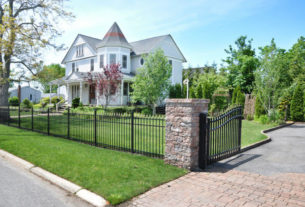 What is a Modular Construction?
What is a Modular Construction?
Modular construction or prefabricated construction is a type of building construction where the actual construction process is conducted off-site, at the modular manufacturer’s plant, under controlled conditions. The prefabricated modules are transported and erected at the construction site. Modular construction involves the same materials, same designing and the same codes and standards used in conventionally constructed buildings.
The Manufacturing Factory
Modular construction takes place off-site, at controlled factories. Here, the manufacturers use wood, steel, or concrete to prefabricate sections of single or multi-stories buildings. Each section is fabricated in a way it can be transported to the construction site easily. The manufacturing takes place in assembly lines, in controlled settings, adopting highly efficient lean manufacturing processes.
Transportation and Erection
The manufacturer or the builder transports the modular units from the factory to the construction site. Here, trained workmen assemble and integrate the individual modules as per the design, using a crane. The process is similar to building a toy house out of Lego blocks, at a larger scale. The design of the modules co-opts stability and safety features. In some cases, the modules may be affixed to a previously erected external structure.
Interiors and Finishing
After fixing the basic structure, the work on fixtures and interior finishes take place as before. In all, modular buildings are about 60 percent to 90 percent completed at the manufacturing plant, before being transported to the construction site and assembled. Some types of modular construction involve only making changed to the interiors of pre-existing structures though.
Basic Types and Approaches
There are different types and variants of modular construction. Four-sided modules or a closed shell, partially open-sided modules, open-sided or corner supported modules, mixed modules and stair modules are some basic types. Each type is relevant for specific uses. For instance, a closed shell suits a factory of warehouse best, whereas an open-sided or partially open-sided module is best suited for homes.
Time and Cost Savings
The major advantage of prefabricated buildings is time and cost savings. Modular constructions take about half the time it takes to construction traditional on-site construction. A typical modular construction workflow takes anywhere between ten days to three months, depending on the type of materials used and the size of the building.
Other Advantages
Apart from time and monetary advantages, modular construction is safer and efficient. Since the fabrication is done in the factory, under controlled settings, there is a focus on standardisation and quality. There is far lesser wastage or pollution as well. The scope for design flexibility also increases, since modules can be assembled in many ways. Highly efficient modular buildings represent the future of construction.



